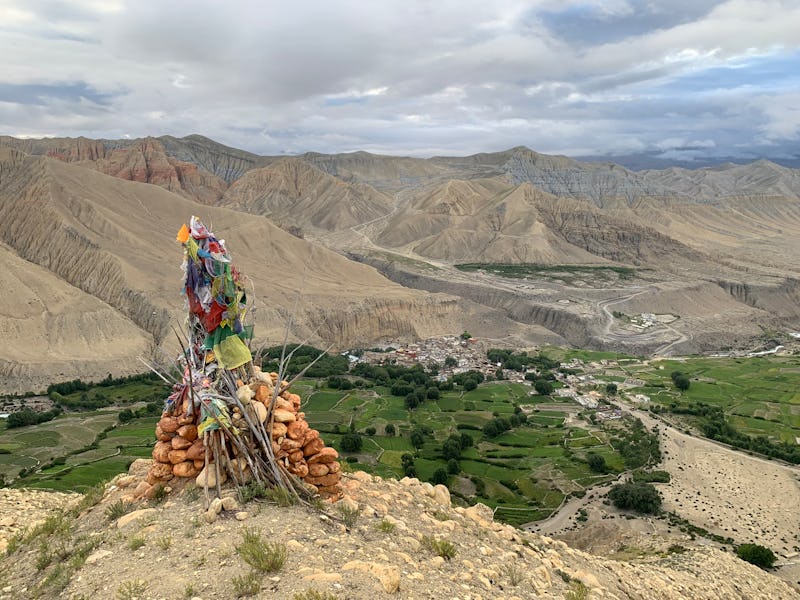Ethnic Tibetan Women Have Evolved a Pregnancy Superpower
Increased hemoglobin concentration could be key to giving birth at extremely high altitudes.

Humans are incredibly resilient. We have found ways to thrive in the most extreme of environments. Take the Tibetan Plateau, an area with altitudes ranging from 12,000 to 15,000 feet. Despite the oxygen-poor environment, people living there somehow thrive. Now, a new study out this week identified key traits that allow Tibetan women to give birth to healthy babies in such extreme conditions. These findings are helping researchers understand the link between genetics, physiological functions, and evolution.
The new work, published today in the journal Proceedings of the National Academy of Sciences, found women living in the Tibetan Plateau who had successful pregnancies were more likely to have physiological traits that allow them to deliver oxygen more efficiently throughout their bodies.
From June to August 2019, the team studied 417 Tibetan women between ages 46 and 86 from three villages between 12,000 and 14,000 feet above sea level in Upper Mustang, Nepal on the southern edge of the Tibetan Plateau. Researchers from the United States, as well as Tibetan nurses and research assistants from Nepal, collected information on these women’s reproductive histories, physiological measurements, DNA, and social factors.
They found that women who had given birth to the most children possessed unique blood and heart traits that aided in their ability to deliver oxygen throughout their bodies, such as to heart, muscles, and other organs. For example, those who reported the most live births had high levels of hemoglobin, the protein in red blood cells that transports oxygen from the lungs to bodily tissues and organs, which permits more efficient oxygen delivery.
They also found that high amounts of hemoglobin increased oxygen levels without making the blood thicker, which could put strain on the heart. “Tibetan women have evolved in a way that balances the body’s oxygen needs without overworking the heart," the study’s senior author Cynthia Beall, a professor emerita of biological anthropology at Case Western Reserve University, said in a press release.
The scientists also identified other unique physiological functions that would confer a benefit in a low oxygen environment such as more rapid blood flow to the lungs as well as heart ventricles that are wider, which allow for more rapid blood flow, and thus more oxygen.
As for the genetic traits that lead to these unique physiological functions, the researchers focused on the EPAS1 gene, which is only found in people indigenous to the Tibetan Plateau. This gene controls the concentration of hemoglobin in the blood; the more hemoglobin in someone’s blood, the more oxygen that gets delivered to rest of the body.
Crucially, these findings reveal a link between extreme environments and physiological adaptation. “Understanding how populations like these adapt gives us a better grasp of the processes of human evolution,” Beall said in the release.
It underscores this group of women’s resiliency and ability to thrive in adverse environments. Further, a better understanding of what contributes to a successful pregnancy could, with more research, help everyone who is trying to conceive.